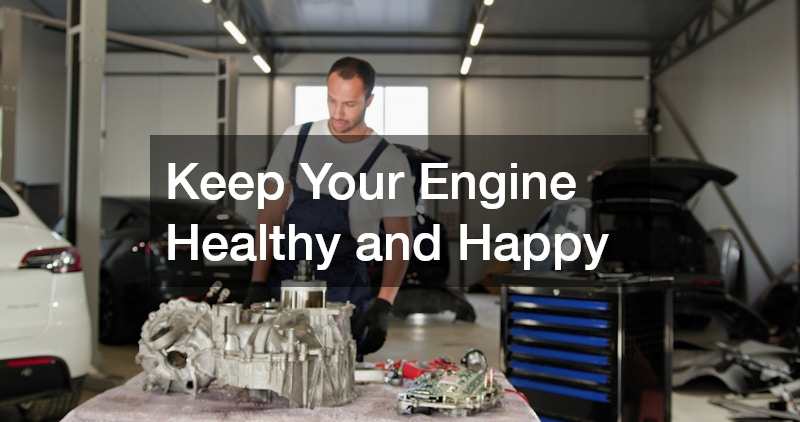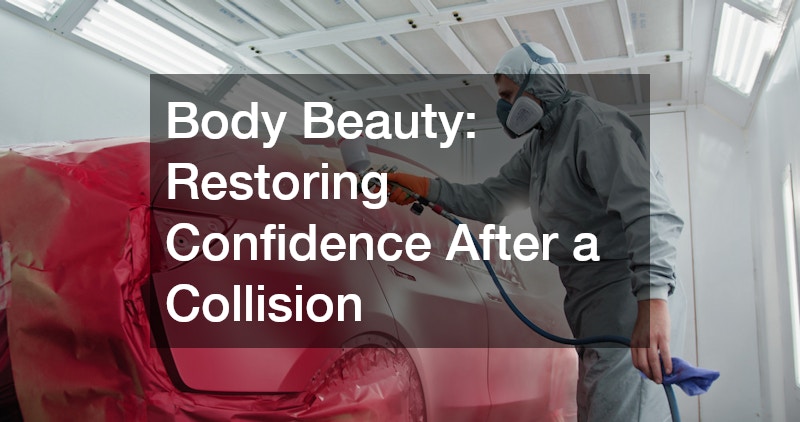Introduction
It’s a typical Monday morning—you’re rushing to work, coffee in one hand, car keys in the other. You hop in your car, turn the key… and nothing happens. The engine sputters, coughs, and gives up. Frustrating? Absolutely. But for many drivers, this is a wake-up call—most car troubles can be prevented with the right maintenance habits.
At AutoFixSecrets.com, we don’t fix cars—we help you understand them. Our goal is to empower everyday drivers with practical knowledge and real-world auto care tips that make a lasting difference. According to AAA, over 35% of roadside breakdowns stem from preventable issues like weak batteries, worn tires, or neglected oil changes. With consistent upkeep, drivers can cut repair costs by up to 40% and extend vehicle lifespan by several years.
These “auto fix secrets” aren’t just about turning a wrench—they’re about building awareness and confidence. A well-cared-for vehicle doesn’t just run better; it keeps you safer, boosts performance, and preserves long-term value.
In this guide, we’ll explore the top 10 Auto Fix Secrets every driver should know to keep their car running smoothly, safely, and efficiently—without spending a fortune at the repair shop.
1. Keep Your Engine Healthy and Happy

Your engine is more than just a component—it’s the powerhouse that keeps your vehicle alive. Think of it as the heart of your car: when it’s healthy, everything else functions better. However, neglecting regular maintenance can quickly lead to performance issues, reduced fuel efficiency, and the need for costly engine repairs that could have been avoided with timely attention.
Engines are surprisingly communicative if you know what to look for. Whether it’s a small ticking sound, a sudden drop in acceleration, or visible exhaust smoke, your car is trying to tell you something’s wrong. Many drivers ignore these subtle signs until it’s too late, turning what could’ve been a $100 fix into a $2,000 overhaul. Paying attention to these early symptoms can save you a lot of frustration—and money—by preventing major engine repairs down the road.
Keeping your engine healthy means staying consistent with oil changes, using the correct grade of fuel, and ensuring belts, hoses, and filters are clean and tight. A simple monthly inspection can help you catch leaks, low oil levels, or strange noises before they become serious issues. For DIYers, basic maintenance like checking the dipstick or inspecting spark plugs goes a long way. And when something feels off, never hesitate to get professional help—it’s always cheaper to repair early than replace later.
Warning Signs of Engine Problems
Your car often tells you when something’s wrong—if you know how to listen. Look out for:
-
Knocking or tapping sounds while driving
-
Smoke from the exhaust (blue, black, or white)
-
Poor acceleration or loss of power
-
The check engine light staying on
Ignoring these signs can turn a minor issue into a major repair bill.
Routine Engine Care Tips
Keep your engine happy with regular oil changes—every 5,000 miles for most vehicles. Always use the manufacturer-recommended oil type and fuel grade. Check belts, hoses, and coolant levels frequently.
A clean air filter helps your engine breathe, while regular fuel injector cleaning ensures efficiency. Simple steps like these can easily add years to your car’s life.
When to Seek Professional Engine Repair
If your car stalls, overheats, or the oil light comes on, it’s time to see a mechanic. Certified technicians can run diagnostics and catch problems early—before they burn a hole in your wallet.
2. Don’t Ignore the Transmission—It’s the Heart of Smooth Driving
While your engine provides the power, your transmission decides how that power reaches the wheels. It’s essentially what allows you to shift gears and drive smoothly, whether you’re cruising down the highway or inching through traffic. Unfortunately, transmission repairs can be among the most expensive if neglected.
A transmission failure rarely happens overnight. It begins with small, easy-to-miss issues—like slipping gears, rough shifts, or a faint burning smell after long drives. Many car owners overlook these signs until the problem becomes critical, and by then, it’s often too late for minor fixes.
Maintaining your transmission doesn’t have to be complicated. Regularly check your transmission fluid level and color—it should be clear red and smell fresh, not burnt. Keeping your cooling system in shape is also essential, as heat is one of the biggest enemies of transmission health. Changing the fluid and filter every 30,000 to 60,000 miles (depending on your car) helps prevent major failures.
A little preventive attention here goes a long way. Think of it like changing the oil in your engine; a few minutes of care now can save you thousands later and ensure every drive remains silky smooth.
How Transmission Issues Start
Transmission problems often begin small—low fluid, a clogged filter, or overheating. Left untreated, they can snowball into full transmission failure.
Signs You Need Immediate Repair
Watch for these red flags:
-
Slipping gears or delayed shifting
-
Grinding or whining noises
-
Transmission fluid leaks (often red or brown)
-
Burning smell during long drives
Preventive Maintenance Secrets
Check your transmission fluid every month. It should be clear red—not dark or burnt-smelling. Flush and replace it roughly every 30,000–60,000 miles, depending on your vehicle.
Regular servicing can extend your transmission’s lifespan dramatically—saving you thousands in the long run.
3. The Magic of Clear Vision: Keeping Glass Damage-Free

Driving safely starts with seeing clearly. Yet, many car owners underestimate how crucial a clean, crack-free windshield is until they’re squinting through spiderwebbed glass. Even a tiny chip can grow into a large crack from vibration, temperature changes, or moisture, making an auto glass repair service your best friend.
Your windshield isn’t just a shield against bugs and debris—it’s an essential safety component that supports your car’s structural integrity during rollovers and airbag deployment. A compromised windshield can literally mean the difference between minor damage and serious injury in an accident.
That’s why dealing with chips and cracks immediately is vital. Professional technicians use specialized resins and tools to restore clarity and strength, while DIY kits often leave visible blemishes or fail under stress. Regular cleaning with non-ammonia glass cleaners also helps preserve clarity and prevent scratches.
Finally, remember that temperature extremes—like blasting your defroster on a freezing morning—can worsen small cracks. Keeping your windshield in top condition not only enhances safety but also ensures a more enjoyable, stress-free driving experience.
Why Glass Integrity Matters
A sturdy windshield isn’t just for looks—it’s a structural component that supports your car’s roof during a rollover. Damaged glass reduces crash safety and can obscure your vision.
Quick Fixes vs. Full Replacements
Minor chips can often be repaired within minutes using professional-grade resin. But large cracks or damage in the driver’s line of sight usually require full replacement. Avoid cheap DIY kits—they rarely seal properly and can worsen the damage.
Expert Tips to Extend Windshield Life
-
Avoid slamming doors (pressure shocks can spread cracks).
-
Park in shaded areas to prevent sun stress.
-
Replace wiper blades every 6 months to avoid scratching.
4. Make Routine Repairs a Habit, Not a Hassle
Consistency is the secret to longevity in both cars and relationships. When it comes to vehicles, keeping up with auto repair services is the single most effective way to avoid major issues. The truth is, small, regular checkups save far more time and money than waiting for something to break.
A lot of car owners only visit a mechanic when a warning light appears—but by that time, the problem has usually worsened. Preventive maintenance, on the other hand, is all about catching small issues early. Regular oil changes, tire rotations, brake inspections, and fluid checks help keep your car performing at its best.
In addition to mechanical reliability, regular maintenance also improves gas mileage, extends engine life, and boosts resale value. Plus, it ensures safety for you and your passengers.
If you’re unsure where to start, establish a maintenance schedule based on your car’s owner’s manual and stick to it. Partnering with a trustworthy shop means you’ll always know when it’s time for your next checkup—and that peace of mind is priceless when you’re on the road.
The Benefits of Preventive Maintenance
Regular checkups catch small issues early—before they turn into expensive failures. It also improves fuel economy and keeps your warranty valid.
Top Routine Services to Prioritize
-
Brake inspections
-
Oil and filter changes
-
Tire rotations and pressure checks
-
Battery testing
-
Fluid top-ups (coolant, brake, transmission, etc.)
How to Choose a Reliable Repair Center
Look for ASE-certified technicians, transparent pricing, and good customer reviews. Building a relationship with a trusted shop ensures honest recommendations and long-term reliability.
5. Body Beauty: Restoring Confidence After a Collision

No one likes seeing their car dented or scratched after a collision. Beyond the visual damage, these issues can hide more serious underlying problems—like frame misalignment or damaged sensors. That’s why visiting a reputable auto body shop after an accident isn’t just about looks; it’s about safety and value.
Modern vehicles are built with intricate designs and materials that require precision repair. Professional body shops use advanced tools and paint-matching technology to restore your car to its pre-accident condition, ensuring everything from airbags to crumple zones functions properly again.
Even minor fender-benders can affect the way your car drives or how your doors close. Addressing these promptly prevents rust, structural weakening, and reduced resale value. In fact, a freshly refinished and aligned vehicle often drives smoother and feels newer than before the accident.
Always choose certified technicians who use OEM parts. They understand your car’s exact specifications and can guarantee results that protect your investment for years to come.
Common Collision Damages
After a crash, you may face dents, scratches, frame misalignment, or cracked bumpers. Even small damage can hide deeper issues affecting safety sensors or alignment.
Repair vs. Replacement Decisions
Not all damage requires new parts. Skilled technicians can repair panels using advanced tools and paint-matching technology, often at lower cost than replacements.
Choosing the Right Body Shop
Always choose certified technicians and OEM parts to maintain your car’s resale value. Get multiple estimates and ask about warranties on paint and workmanship.
6. Small Engines, Big Impact
Small engines power many of the tools and machines that make life easier—from your lawnmower and generator to motorcycles and snowblowers. Yet, these compact workhorses often get overlooked until they stop working altogether. Skilled small engine mechanics know that proper upkeep makes all the difference.
Just like a car engine, small engines need clean fuel, good air, and proper lubrication. Over time, dirt, moisture, and stale gas can cause carburetors to clog and spark plugs to foul, leading to rough starts or stalling. Seasonal storage is another major factor—leaving fuel in the tank during winter can gum up components and shorten lifespan.
To keep these engines performing their best, clean or replace air filters regularly, change the oil, and use fuel stabilizer during long storage periods. If you notice smoke, sputtering, or vibrations, get it checked early rather than trying random DIY fixes.
A well-maintained small engine saves frustration, improves efficiency, and extends the life of your equipment—something every homeowner and DIYer can appreciate.
Common Small Engine Issues
-
Hard starts or stalling
-
Fouled spark plugs
-
Clogged carburetors
-
Fuel system contamination
Maintenance Tips for Longevity
Drain fuel before long-term storage, clean the carburetor, replace filters, and check spark plugs regularly. A few minutes of upkeep saves a lot of frustration later.
When to Visit a Small Engine Mechanic
If your equipment smokes excessively, refuses to start, or vibrates abnormally, call a pro. They have the tools to diagnose compression issues and fine-tune engine timing.
7. Comfort and Style: Upgrading with Professional Tinting
Adding auto window tinting isn’t just about style—it’s one of the simplest upgrades that improve comfort, privacy, and interior longevity. Many drivers underestimate how much a quality tint can transform their driving experience, especially in sunny climates.
Tinted windows significantly reduce glare and heat, keeping the cabin cooler and more comfortable during long drives. They also block harmful UV rays that can fade upholstery and dry out dashboards over time. This means fewer interior repairs and a fresher look for years.
However, not all tint films are equal. Cheap tints bubble, peel, or discolor within months. Professional installers use high-quality, UV-resistant films that maintain clarity and last much longer. They also ensure compliance with state tinting laws—something that DIY kits often overlook.
A good tint doesn’t just make your car look sleek; it adds an invisible layer of protection for you, your passengers, and your vehicle’s interior. It’s one of those small auto fix upgrades that delivers big benefits every single day.
.
The Functional Benefits of Tinting
Window tints reduce glare, protect upholstery from fading, and keep interiors cooler during summer. Some films even block up to 99% of harmful UV rays.
Legal and Installation Tips
Each state has specific tint laws—usually limiting how dark you can go. Professional installers know these limits and ensure clean, bubble-free application.
Care and Maintenance of Tinted Windows
Avoid rolling down windows for 3–5 days after installation. Clean with ammonia-free solutions to protect the film and extend its lifespan.
8. Eco-Friendly Auto Fixes: Recycling and Reuse
When your old car finally gives up the ghost, you have a choice—scrap it carelessly or recycle it responsibly. Choosing auto recycling services is one of the most sustainable auto fix decisions you can make.
These facilities do far more than just crush vehicles. They drain fluids, recover valuable metals, and salvage reusable components like engines, transmissions, and batteries. This process minimizes waste and reduces the demand for new materials, which saves energy and protects the environment.
Beyond the environmental benefits, recycling can also be profitable. Many services pay for junk cars, offering a convenient way to earn cash while doing good for the planet. To prepare your vehicle, remove personal belongings, keep your paperwork ready, and ensure all hazardous materials are properly handled.
Sustainability and smart car ownership go hand in hand. When you recycle responsibly, you contribute to a cleaner planet and ensure your old car parts get a second life.
What Happens at an Auto Recycling Yard
Your car is drained of fluids, reusable parts are salvaged, and the remaining metal is crushed and recycled into new products—reducing waste and pollution.
How to Prepare Your Car for Recycling
Remove personal items, cancel insurance, and gather ownership documents. Some yards offer free towing for end-of-life vehicles.
Why Eco-Friendly Auto Fixes Matter
Recycling saves energy, conserves raw materials, and prevents hazardous waste from entering landfills. It’s an easy way to care for both your wallet and the planet.
9. Personalize Your Ride with Creative Graphics

Cars have become an extension of personal identity, and vehicle graphics let you express that individuality—or even advertise your business on the go. From full vinyl wraps to subtle decals, vehicle customization has evolved into both an art form and a marketing strategy.
A high-quality wrap doesn’t just look great—it protects the paint underneath from UV rays, scratches, and minor abrasions. For business owners, it’s an incredibly cost-effective way to promote services while driving around town. Studies show vehicle wraps can generate thousands of impressions daily for a fraction of the cost of traditional ads.
Installation, however, should always be left to professionals. Precise alignment, heat application, and surface preparation determine how long your wrap will last. With proper care—like gentle hand washing and avoiding harsh chemicals—wraps can stay vibrant for up to seven years.
Whether it’s a stylish personal upgrade or a rolling billboard for your brand, vehicle graphics are an easy, creative way to stand out on the road.
Types of Vehicle Graphics
-
Full wraps for complete color changes
-
Partial wraps or decals for subtle style
-
Business branding with logos and contact info
Installation and Care Tips
Always hire experienced installers for a flawless finish. Avoid pressure washers and wax designed for painted surfaces—use vinyl-safe products instead.
Business Benefits of Vehicle Branding
A well-designed wrap turns every trip into a mobile ad campaign, reaching thousands of local eyes daily—far cheaper than traditional advertising.
10. Always Be Ready for Emergencies on the Road
Even the most well-maintained cars can surprise you. That’s why every driver should have a reliable 24 hour tow truck service saved in their contacts. When something goes wrong—flat tires, dead batteries, lockouts, or accidents—knowing help is just a call away provides priceless peace of mind.
Towing services today do more than just pull vehicles; many offer roadside assistance like jump-starts, tire changes, or fuel delivery. Some even provide mobile repair options, saving you from a full tow altogether.
When choosing a towing provider, check for licensing, insurance, and 24/7 availability. Read reviews or ask your local repair shop for recommendations. A reliable service will respond quickly and handle your vehicle with care.
Also, always keep a roadside safety kit with essentials like flares, a flashlight, water, and a phone charger. Preparation is the real secret to stress-free driving—and when emergencies do strike, you’ll be ready.
When You’ll Need Emergency Towing
Flat tires, dead batteries, lockouts, and accidents can happen anytime. Knowing who to call means peace of mind when you need it most.
How to Choose a Reliable Tow Truck Service
Select a licensed, insured provider with 24/7 availability. Ask about roadside assistance packages that include fuel delivery, jump-starts, or tire changes.
Safety Tips While Waiting for Help
-
Pull over to a safe area
-
Turn on hazard lights
-
Stay inside the vehicle if you’re on a busy road
-
Keep emergency supplies (water, flashlight, phone charger) handy
Conclusion
Your car takes care of you every day—getting you to work, keeping your family safe, and powering your adventures. It deserves the same level of care in return.
These auto fix secrets aren’t complicated—they’re simply smart habits that prevent major issues, improve performance, and extend your vehicle’s life. Whether it’s regular oil changes, professional inspections, or keeping your windshield clean, small actions make a big impact.
Stay informed, stay prepared, and partner with trusted professionals who treat your car as their own.
Because when you take care of your car, it rewards you with safety, reliability, and confidence—mile after mile.
“Your car takes care of you — return the favor with regular care.”
FAQs
1. How often should I service my car’s transmission?
Most experts recommend servicing your transmission every 30,000–60,000 miles, depending on driving habits and vehicle type. Always follow your owner’s manual for guidance.
2. Can I repair a small windshield crack myself?
Minor chips can be fixed with resin kits, but professional repair ensures durability and safety. Large or spreading cracks always require replacement.
3. How do I know if my engine needs immediate attention?
If you notice smoke, knocking sounds, loss of power, or warning lights, see a mechanic immediately. Early repairs can prevent catastrophic damage.
4. Is professional tinting worth the cost?
Absolutely. Professional tinting ensures legal compliance, lasting quality, and proper UV protection—something DIY kits can’t guarantee.
5. What are the benefits of recycling old vehicles?
Auto recycling helps the environment, recovers valuable parts, and often provides cash incentives for your old car.
6. How long do vehicle wraps usually last?
High-quality vinyl wraps typically last 5–7 years with proper care and cleaning.
7. What should I do while waiting for a tow truck?
Stay inside your vehicle if it’s safe, turn on hazard lights, and avoid standing on the roadside. Keep an emergency kit ready for added safety.
